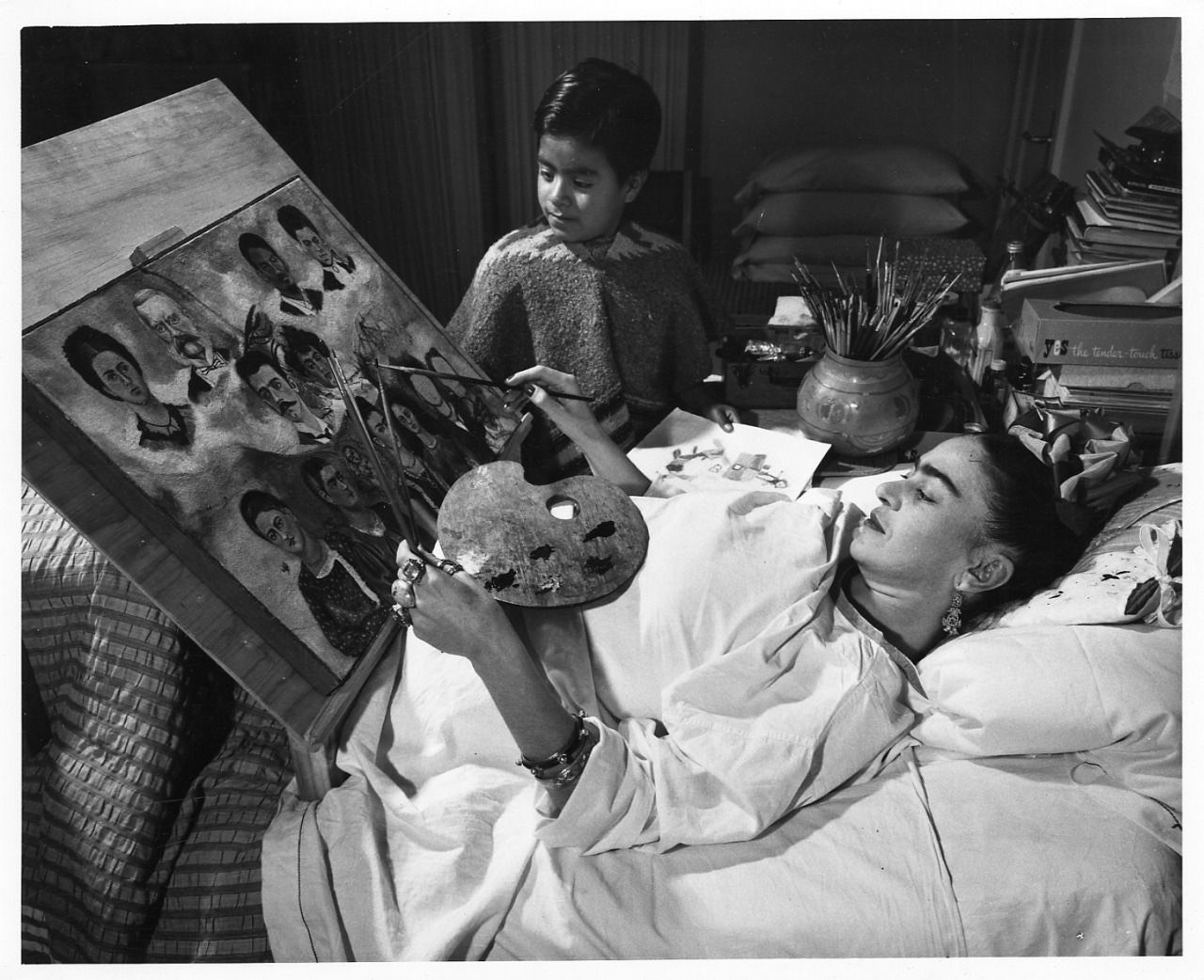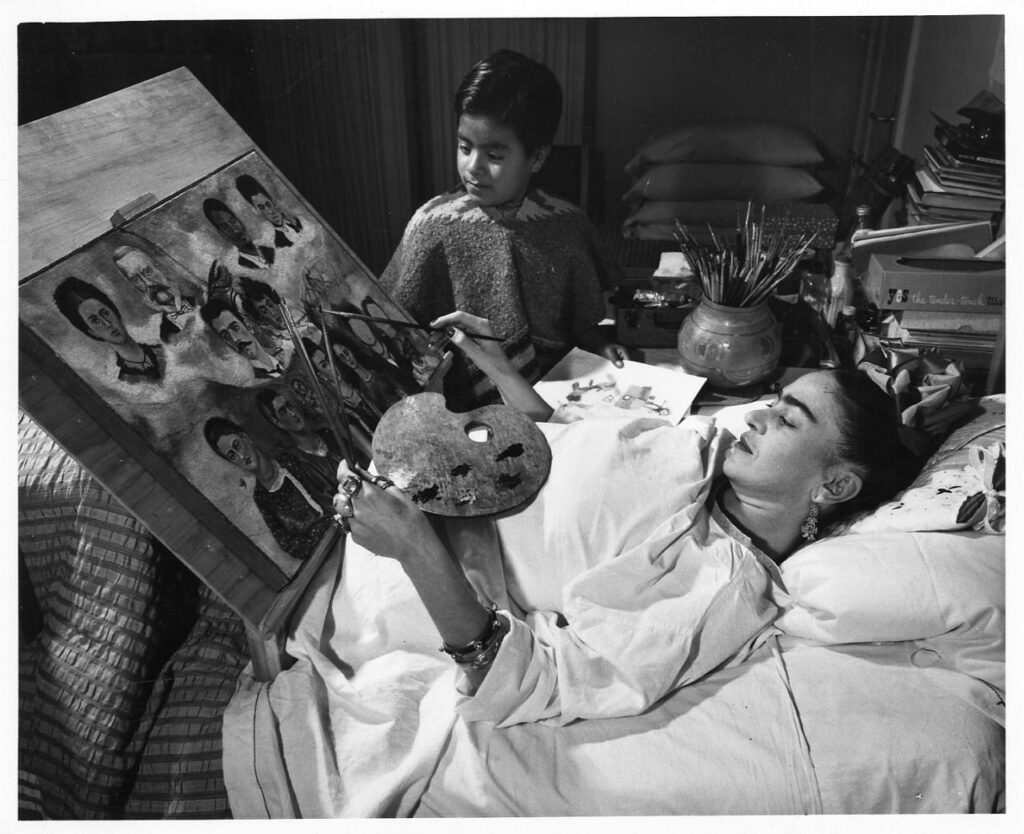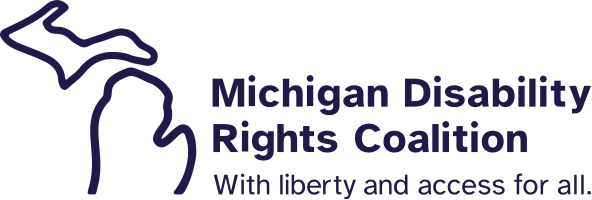Frida Kahlo used Assistive Technology!
Friday, June 21, 2019

By Jen Mullins, BS, CTRS, MATP Staff

Source: artpil.com
Renown Mexican artist Frida Kahlo has been one of my favorite artists since I was a young girl. A few years ago, I was excited to learn that Kahlo also had disabilities and she shared about them in her art and writing; in this way, she has inspired and emboldened me to do the same in my own artwork. Recently, I read an article that featured a photo of Kahlo using Assistive Technology (AT) to help her paint. While she was a young adult, Kahlo traveled on a bus that was in a terrible accident. “The accident broke Kahlo’s spinal column, collarbone, ribs, and pelvis, fractured her right leg in 11 places, and dislocated her shoulder. Those severe injuries left her racked with pain for the rest of her life, and she frequently [felt most comfortable in bed]. But during these times, Kahlo picked up her father’s paintbrush. Her mother helped arrange a special easel that would allow her to work from bed.” In this photo Kahlo is laying on her back, painting while in bed. She is situated with pillows behind her head, a paint palette resting on her stomach, a large, tilted easel at her waist, and a vase filled with paint brushes on a nearby side table. A young child is at her side (near the vase of paint brushes) watching her paint.

Source: fridakahlo.org
Kahlo’s story and this photograph of her made me interested to find out what other kinds of easels are available for artists with disabilities. Just like Frida Kahlo and her family discovered, I found that there are different types of easels available that may work as Assisitive Technology for some:
- Though I can’t say for certain, from the photograph it looks like Kahlo is using an adjustable drawing board. These boards can be placed on a variety of surfaces and the slant or tilt of the board is adjustable depending upon the needs of the artist.
- The Alvin Reflex Table was designed with wheelchair access in mind, The device has a semi circle cut out for accessibility of wheelchairs. The 30″ × 40″ top has a raised, black, PVC edge that prevents items from falling off. The base of the table is wide enough to allow wheelchairs to maneuver through and has telescoping legs to adjust the height.
- The Convert-able table is a large, multipurpose and adaptable table with 0º-90º of tilt. The optional Art Easel top keeps paper unwrinkled on a roll while horizontal guides hold the paper in place.
- Danette Smiths Rotating Table Top Easel is a portable easel with a rotating top on ball bearings and is adjustable to 3 different heights.
- A standard table top easel may be used while sitting, standing, or reclining depending on the surface it is placed on and needs of the artist.
- Standing desks can be adjusted to many different heights, often with the push of a button. Some standing desks offer “memory settings” so that you can save a height setting and get the desk to that specific setting easily.
- If using a tablet to create art, tablet stands and mounts are available to position the tablet into multiple, different positions based on the artist’s needs. Some mounts can attach to the arms of wheelchairs, chairs, bed frames, and more and therefore have the potential to be mounted in more accessible ways than stands that need to be on a fairly flat surface.
Author Samantha Chavarria shares more about Kahlo’s many identities and her personal connections with Kahlo in her article, I found my passion after becoming disabled, and I thank Frida Kahlo for teaching me the beauty of second chances. Are you a fan of Frida’s? What is your most favorite painting or quote by her?

